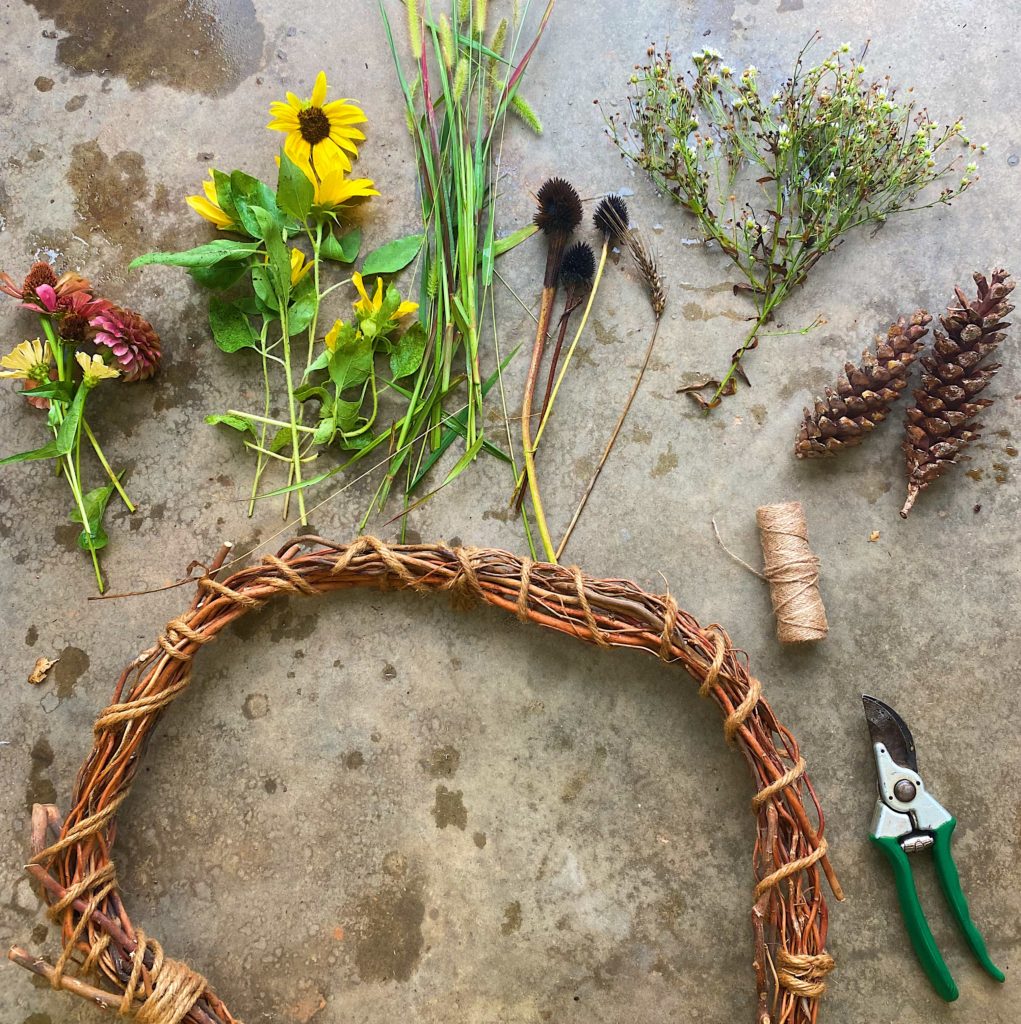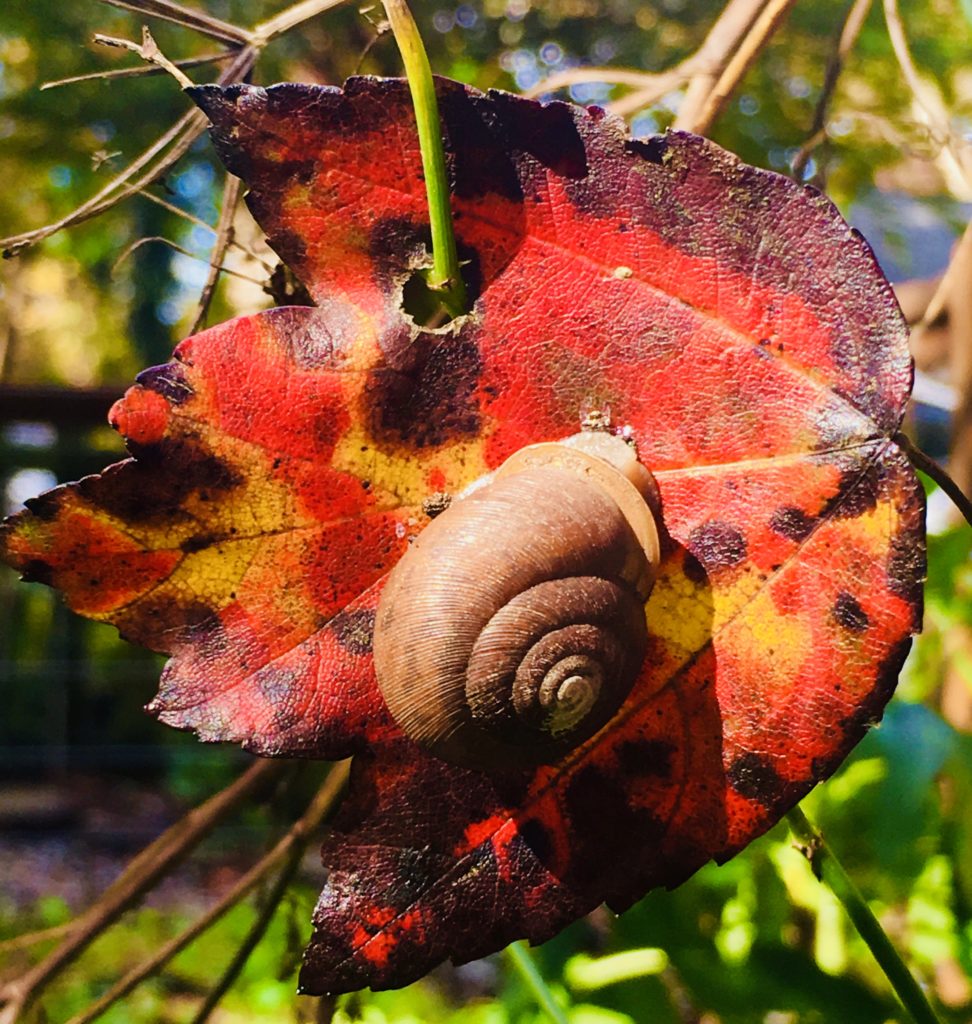
As plants begin dormancy, the last of the leaves are dropping in droves and most flowers and grasses have long since gone to seed. Conventionally speaking, we now sit squarely in ‘fall cleanup’ season. But typical fall landscaping practices can do more harm than good. Adopting a more regenerative, ecologically-minded management system will help enhance your garden’s visual interest during winter, benefit wildlife and even give your plants a head start next spring. Gardening with a more sustainable, permaculture-focused mindset means taking the larger ecosystem around us into consideration. Below, I’ll walk you through 4 reasons to rethink your fall landscaping regimen and share some techniques for tidying up permaculture-style.
1. Dried flower heads give your winter garden structure and visual interest.
Let’s begin with beauty. Who doesn’t like a little somethin’ to look at during winter? Aside from evergreens and a handful of fall and winter-blooming species, landscapes can begin to be a little drab during dormancy. Leaving dried flowers and seed heads on plants can add a spectrum of interesting shapes, patterns and textures to your landscape that provide structure and visual interest.
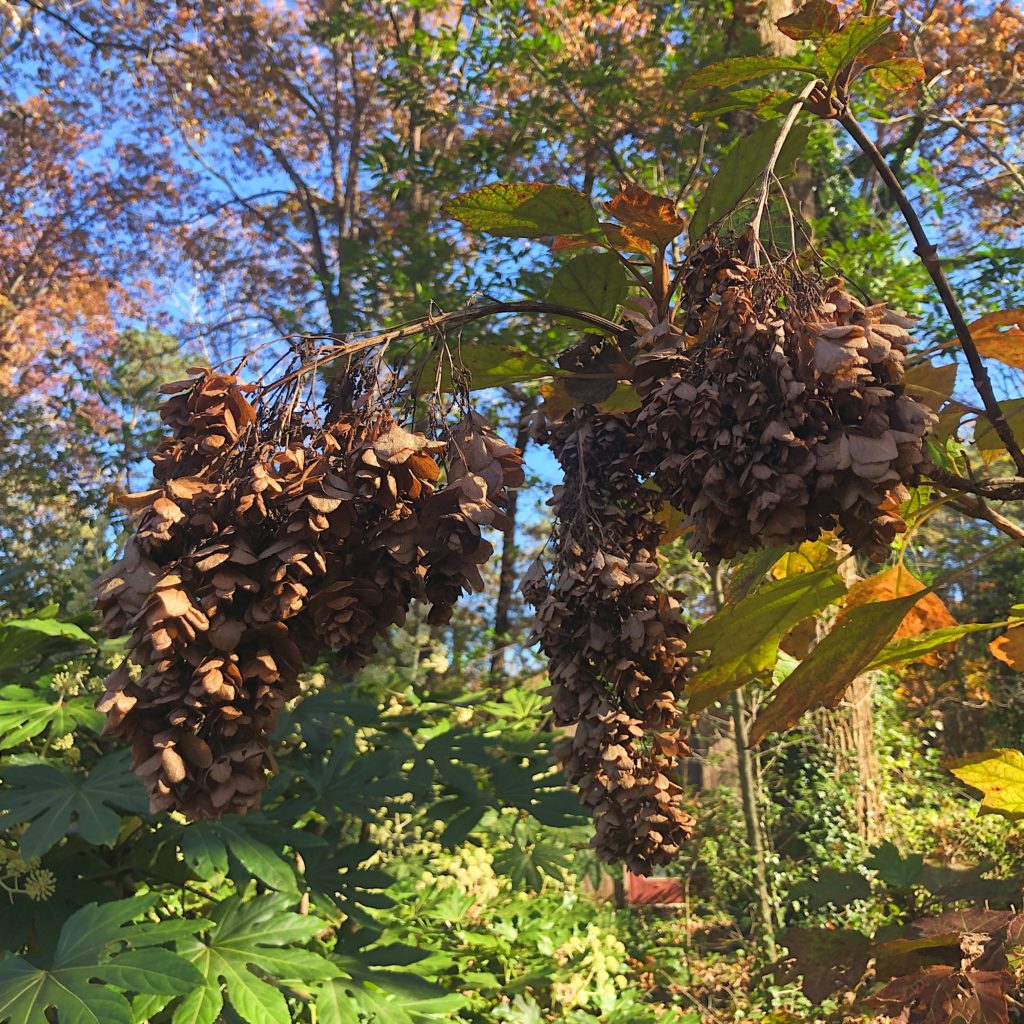
Leaving persistent blooms on plants in your landscape can create added visual interest in winter.
2. Seed and flower heads are an important source of winter food and habitat for wildlife and beneficial insects.
More important than their visual interest, seed heads provide crucial food for birds and other animals throughout winter. In fact, many birds that feed on insects during warmer months switch to eating seeds in winter. By leaving seed heads intact rather than removing them, you’ll be supporting local wildlife.
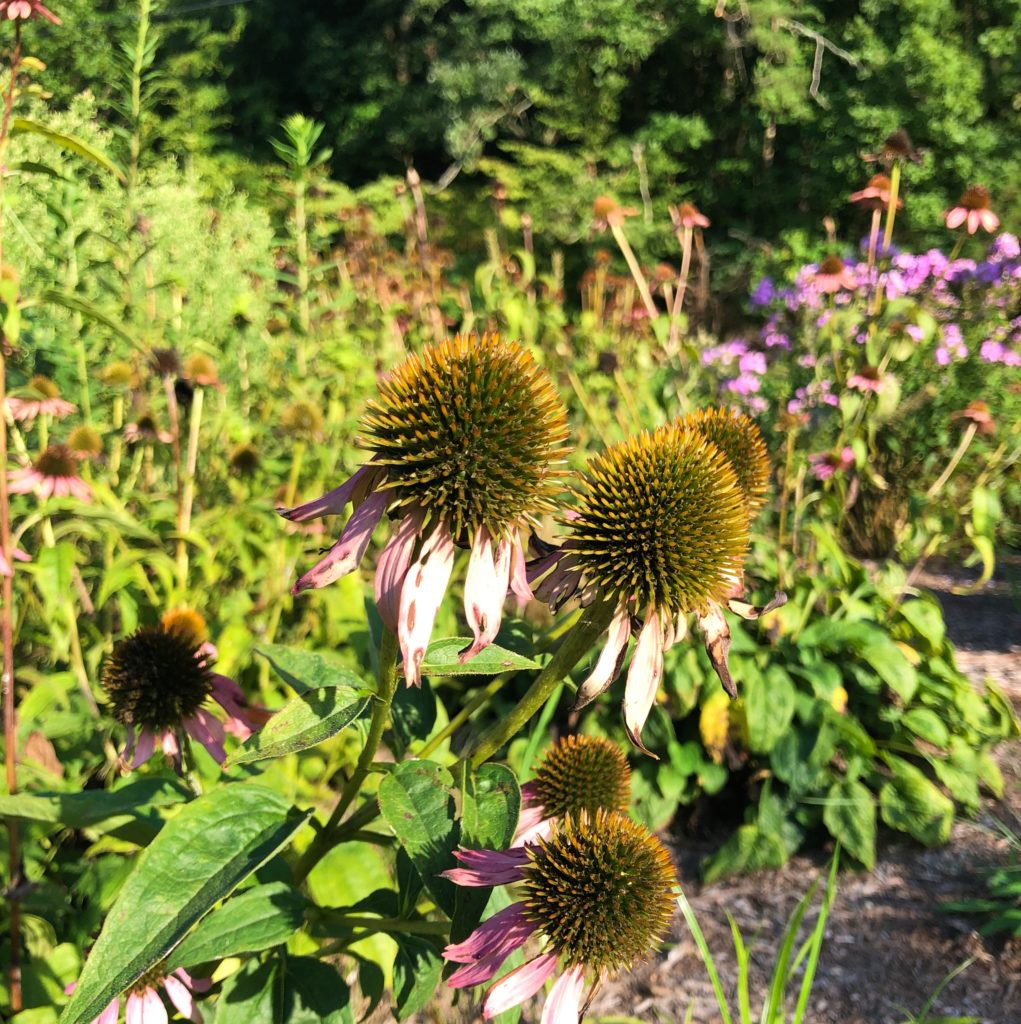
Seed heads from flowers like echinacea provide an important source of food for a variety of birds and small mammals.
3. Dried vegetation makes a cozy home for beneficial birds, invertebrates and mammals.
The plant material from your spent perennial blooms, grasses and other plants provide protective winter habitat for a wide variety of creatures. While birds and other creatures eat the seeds, overwintering insects and reptiles find crucial shelter among the stalks, foliage and thatch. You can manage grasses and pollinator gardens like a meadow by leaving dried vegetation for habitat throughout winter and waiting until spring to cut them back. In our area, we’d recommend cutting in late March and again in July.
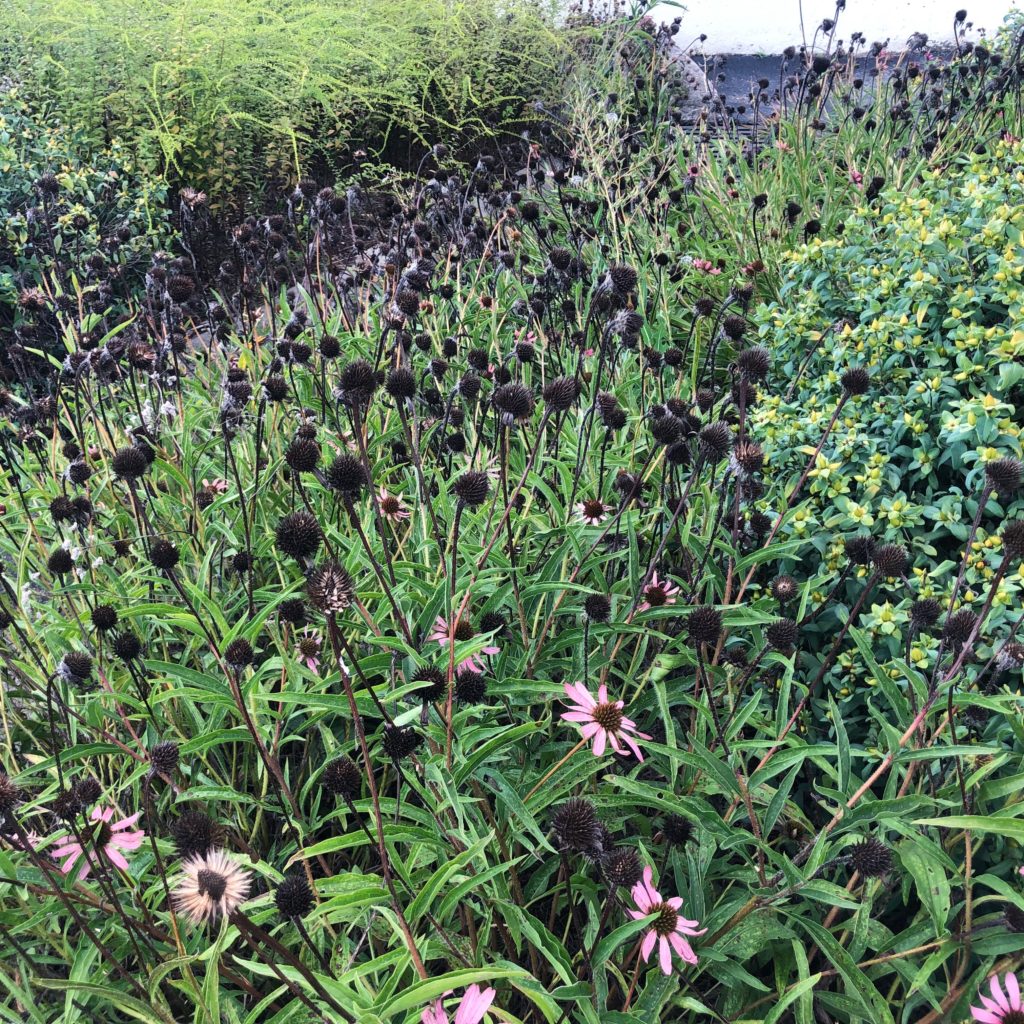
When these perennials go dormant, persistent seed heads and dried vegetation provide food and shelter for a variety of animals and insects over winter.
4. Leaves make excellent mulch and habitat.
In conventional landscaping, leaves are often treated as a nuisance. But they’re an incredible, free resource you can put to work in your landscape to benefit both your plants and wildlife. By keeping them on site and using them as a mulch in your planting beds and garden, you’ll add organic matter to your soil, protect roots from frost and help retain moisture. Leaf litter also provides excellent winter cover for beneficial insects and other creatures. You can rake leaves directly onto your beds or pile them to store for mulching later on or for use in composting. Beyond the ecological benefits of keeping leaves on site, putting them to use in your landscape has economic perks as well. By adding more organic matter and moisture to your soil over time, you’ll reduce the need for irrigation and to buy fertilizer, and you’ll save money on buying bags to collect them every year. You’ll decrease your carbon footprint, too!
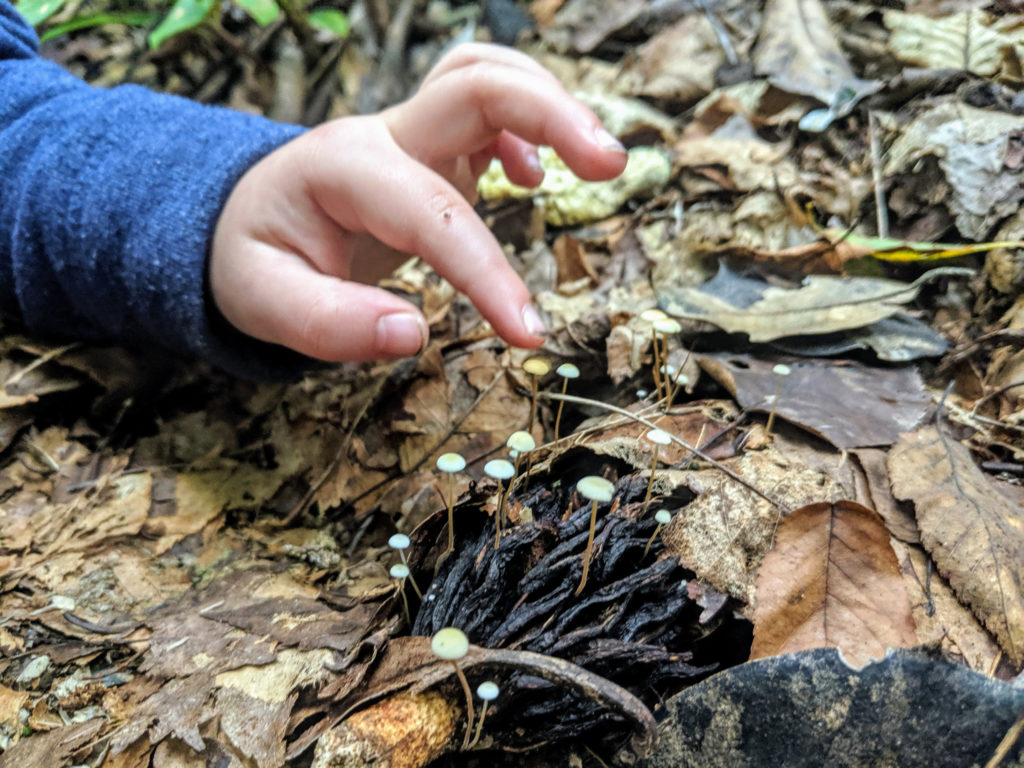
Leaves add organic matter to the soil as they decay, help retain soil moisture and provide habitat.
Still feel the need to tidy up? We get it. If you’re driven to deadhead and keep those leaves in check, consider doing so in a manner that will retain materials on site and continue to benefit wildlife. You can:
- Chop and drop – when removing stems and perennial vegetation, cut stalks in 3-5” pieces, allowing them to fall to the ground in your beds to return nutrients to the soil. Alternatively, if you’d prefer, you can pile these pieces elsewhere (like behind shrubs). By keeping these pieces at this size you will still create potential habitat for insects and retain nutrients on site. Leaving 4-5” of the aboveground stalks intact will also help create habitat for insects.
- Outside dried flower arrangement – if you’d like to deadhead flowers, tie flower and seed heads together vertically and store outside together in an arrangement that brings visual interest and is still accessible to wildlife foraging seeds.
- Store your leaves on site – if you’re not planning to mulch your beds with leaves immediately, create a designated leaf pile or leaf cage in your landscape where they can break down further. You can add leaves to your compost, too.
- Feeder wreath – use grapevine or another thick, pliable vine to create a wreath to adorn with seed and flower heads, pine cones and other materials to display in your garden as an artful, DIY bird feeder. To make, first lay the vine wreath horizontally on a flat work surface. Cut twine or rope into 3 pieces approximately 48” in length. Tie each piece of twine around the wreath at 3 evenly spaced intervals, then tie the free ends of each piece of twine together above the wreath. Adorn seasonally with flowers, seed heads, cones and grasses to provide a perch and food for birds and other animals over winter.
